In recent years, the contact grill market has seen a surge in popularity, particularly in Europe and North America. This trend has been fueled by advancements in technology, changing consumer preferences, and a growing demand for healthier cooking options. As the industry continues to evolve, it’s crucial to understand the key players, market dynamics, and the factors shaping the future of contact grills. This article delves into the world of contact grill manufacturing, exploring the innovations, distribution channels, and the challenges and opportunities that lie ahead.
Introduction to Contact Grill Market in Europe and North America
The contact grill market in Europe and North America has seen a remarkable rise in popularity over the years, with consumers increasingly gravitating towards convenient and healthy cooking solutions. These regions, known for their diverse culinary landscapes, offer a unique blend of traditional and modern cooking methods, making them prime territories for the growth of contact grill technology. As we delve into this market, it becomes evident that contact grills are not just a trend; they are becoming a staple in many kitchens.
In Europe, the contact grill market is characterized by a strong preference for high-quality, energy-efficient appliances. Consumers here are particularly interested in grills that offer versatility, allowing them to sear, grill, and even bake with ease. The demand for these grills is driven by health-conscious consumers who seek to minimize oil usage while achieving a deliciously caramelized finish on their meats and vegetables.
North America, on the other hand, has a more diverse market with a blend of traditional grilling enthusiasts and those looking for a quick and easy way to cook. The market here is segmented by demographics, with younger families and urban professionals leading the charge in adopting contact grills. The convenience factor, coupled with the ability to produce restaurant-quality meals at home, has made contact grills a must-have item for many.
One of the key drivers of the contact grill market in both Europe and North America is the growing trend towards healthier eating habits. As people become more aware of the nutritional benefits of grilling over frying, contact grills have stepped into the spotlight. These appliances are designed to provide a quick and even cooking process that seals in flavors and nutrients, making them an appealing choice for health-conscious consumers.
The competitive landscape in both regions is quite dynamic, with a mix of well-established brands and emerging players vying for market share. Many consumers in Europe and North America are brand loyal, often opting for trusted names that they associate with quality and reliability. However, the market is also witnessing a surge in interest from customers who are looking for innovative features and eco-friendly designs.
In terms of technology, contact grills have evolved significantly. Modern grills are equipped with features such as adjustable temperature controls, non-stick surfaces, and even smart connectivity options that allow users to monitor their cooking progress remotely. These advancements have not only enhanced the user experience but have also expanded the potential customer base to include individuals who may not have been interested in cooking with contact grills in the past.
The distribution channels for contact grills in Europe and North America are varied, with brick-and-mortar stores, online retailers, and even specialty kitchen stores playing a significant role. The rise of e-commerce has also contributed to the ease of access for consumers, allowing them to explore a wide range of products and read reviews before making a purchase.
When it comes to the future of the contact grill market, there are several trends that are likely to shape its growth. One such trend is the customization of cooking experiences, where manufacturers are offering grills with adjustable cooking surfaces and interchangeable plates to cater to different types of food preparation. Another trend is the integration of health and wellness into the design of contact grills, with features that promote healthy cooking habits and make it easier for consumers to track their dietary intake.
In conclusion, the contact grill market in Europe and North America is robust and dynamic, with a strong focus on innovation, health, and convenience. As the market continues to grow, manufacturers will need to stay attuned to changing consumer preferences and technological advancements to maintain a competitive edge.

Key Players and OEM Contact Grill Manufacturers
In the dynamic and competitive landscape of the European and North American contact grill market, several key players have emerged as industry leaders. These companies not only produce their own brands but also serve as OEM (Original Equipment Manufacturer) suppliers for other brands, broadening their market reach. Let’s delve into some of these prominent figures in the contact grill industry.
German giants like Tefal and Krups have long been synonymous with kitchen appliances, and their contact grills are no exception. Tefal, known for its innovative cooking technology, offers a range of contact grills that cater to both home cooks and professional chefs. Their products are often recognized for their durability and efficiency. On the other hand, Krups has gained a reputation for stylish and user-friendly designs, making their contact grills popular among consumers seeking both form and function.
In the United States, brands like George Foreman have become household names. The George Foreman Grill, with its iconic design, has been a staple in American kitchens for decades. The brand has expanded its offerings to include a variety of contact grills that promise healthier cooking options through its flat-top design, which allows for even cooking and easier clean-up. As an OEM, George Foreman supplies grills to numerous retailers and brands, further solidifying its position in the market.
On the European front, brands like Breville and DeLonghi are well-recognized for their high-quality kitchen appliances. Breville’s contact grills are often praised for their precision and performance, appealing to both casual and serious cooks. DeLonghi, with its extensive range of kitchen gadgets, has also made a name for itself in the contact grill sector, offering a mix of innovation and affordability.
The landscape is not just dominated by these well-known brands; there are also several niche players making waves. For instance, Swisscontact, a company known for its high-quality and durable products, has carved out a niche with its premium contact grills. These grills are often favored by consumers who value craftsmanship and longevity.
When it comes to OEM contact grill manufacturers, the list of players is extensive. Many of the brands mentioned above also operate as OEMs, providing custom-made contact grills to other companies. This business model allows these manufacturers to diversify their customer base and cater to a wider range of needs. For example, a smaller brand looking to launch a new product might turn to an established OEM to produce the grills under their own label.
In Europe, companies like Frico are known for their expertise in manufacturing commercial-grade contact grills. Their products are often chosen by restaurants and catering services for their robust construction and ability to handle high volumes of food. Similarly, in North America, manufacturers like Salton offer a wide range of OEM solutions, from small countertop grills to larger commercial models.
Another notable OEM player is Zojirushi, a Japanese company that is respected for its precision engineering. They have a reputation for producing contact grills that are not only durable but also energy-efficient, making them a preferred choice for a variety of OEM projects.
The OEM contact grill market is also witnessing a surge in demand from online retailers and e-commerce platforms. These platforms are increasingly looking for cost-effective and high-quality solutions to offer their customers, and OEM manufacturers are stepping up to meet this need. Companies like Cuisinart and Hamilton Beach, which are known for their consumer brands, also offer OEM services to these online retailers.
The success of these OEM contact grill manufacturers lies in their ability to adapt to the changing market trends. As consumers become more health-conscious, there is a growing interest in contact grills that can cook foods with minimal oil, promoting healthier eating habits. Additionally, as technology advances, these manufacturers are incorporating features like temperature control and non-stick surfaces into their products to enhance user experience and meet the evolving demands of the market.
In conclusion, the key players and OEM contact grill manufacturers in Europe and North America are diverse and dynamic. From established household names to niche players and global OEMs, these companies are driving innovation and shaping the future of the contact grill market. Their ability to adapt to new trends and provide high-quality products has made them indispensable to both consumers and retailers alike.
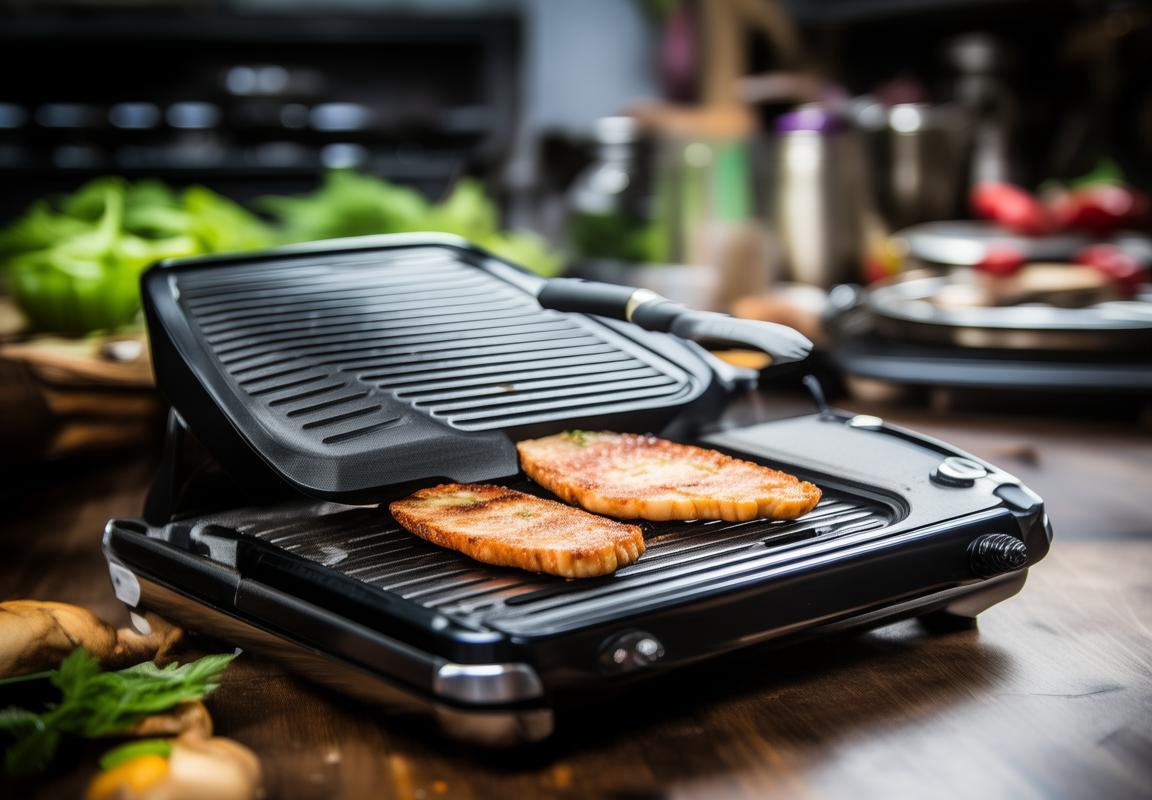
Market Dynamics and Consumer Preferences
The contact grill market in Europe and North America is driven by a variety of dynamics that influence consumer preferences and behavior. These dynamics range from technological advancements to cultural shifts and economic factors.
Consumer demand for convenience and health is at the forefront of market dynamics. With busy lifestyles and a growing awareness of dietary health, there’s a significant interest in appliances that can cook meals quickly and with minimal oil. This preference for healthier cooking methods has propelled the sales of contact grills, which are often perceived as a healthier alternative to traditional grilling methods.
The rise of outdoor living and social gatherings has also played a crucial role. Contact grills are a popular choice for outdoor events, offering a versatile and efficient way to cook for groups. The ability to achieve a perfect sear on both sides of the food, with the added convenience of not having to turn the food, is highly appealing to consumers who value ease and quality.
Technological innovations have been a driving force behind the market’s growth. Smart contact grills with features like temperature control, digital displays, and programmable settings have become increasingly popular. These advancements not only enhance the cooking experience but also cater to the tech-savvy consumer who enjoys integrating modern technology into their daily life.
Cultural trends have also influenced the market. The popularity of gourmet and international cuisine has led to a demand for contact grills that can replicate the flavors and textures of various cooking styles. From Korean barbecue to Japanese yakitori, consumers are looking for appliances that can help them recreate these experiences at home.
In terms of consumer preferences, the desire for customization and personalization is evident. Consumers are increasingly seeking products that can be tailored to their specific needs, whether it’s through adjustable heat settings, removable cooking plates, or even personalized recipes. This trend towards customization reflects a shift in consumer behavior, where people are more likely to invest in products that offer a high degree of control and adaptability.
Price sensitivity remains a significant factor in the contact grill market. While premium features and brands often command higher prices, there is a strong segment of consumers who prioritize affordability. As a result, manufacturers are balancing the introduction of new technologies with competitive pricing to cater to a broad range of budgets.
The rise of health and wellness trends has also led to an increased interest in contact grills that offer additional health benefits. For instance, grills with non-stick surfaces or those that can be used with minimal oil are gaining traction. Consumers are looking for ways to reduce the amount of oil they use while still enjoying the taste and texture of grilled foods.
Moreover, the market is witnessing a surge in eco-conscious consumerism. People are becoming more aware of the environmental impact of their purchases, and this has led to a preference for energy-efficient appliances. Contact grill manufacturers are responding by developing products that are not only energy-saving but also made with sustainable materials.
In conclusion, the contact grill market is shaped by a complex interplay of factors. From the need for convenience and health to the influence of technology and cultural trends, these dynamics are driving consumer preferences and shaping the future of the contact grill industry. As manufacturers continue to innovate and adapt to these changing demands, the market is poised for further growth and evolution.
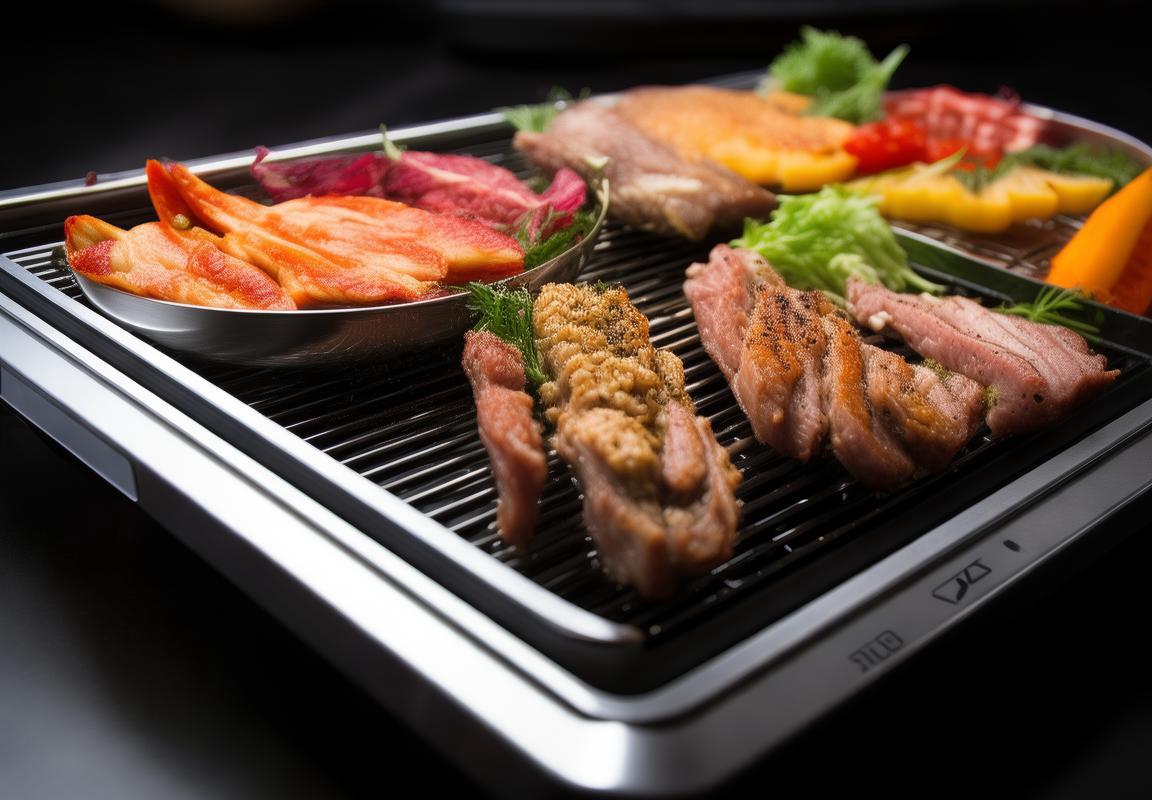
Innovations and Technological Advancements
In the ever-evolving landscape of kitchen appliances, contact grills have seen a surge in popularity, driven by innovations and technological advancements that cater to consumer demands for convenience, health, and culinary versatility. Here’s a glimpse into the latest developments shaping the contact grill market.
Grill Technology EvolutionThe evolution of contact grill technology has been marked by significant improvements in heat distribution and cooking efficiency. Modern grills now feature advanced heating elements that ensure even cooking across the entire surface, reducing the likelihood of cold spots and overcooked areas. This evolution has been a game-changer for both home cooks and professional chefs alike.
Smart Sensors and Control SystemsOne of the most notable advancements in contact grills is the integration of smart sensors and control systems. These systems allow users to precisely regulate the temperature and cooking time, providing a level of control that was previously only available in high-end commercial kitchens. Smart grills can often be connected to smartphones or tablets, allowing users to monitor and adjust their cooking process remotely.
Non-Stick Coatings and Easy CleaningThe introduction of high-quality non-stick coatings has made contact grills more user-friendly and easier to maintain. These coatings not only prevent food from sticking but also make the cleaning process a breeze. Consumers are increasingly seeking appliances that reduce the time and effort spent on post-cooking cleanup, and the latest contact grills are rising to this challenge.
Versatile Cooking FunctionsModern contact grills come with a variety of cooking functions that go beyond the traditional grilling experience. Many models now offer searing, pan-frying, baking, and even broiling capabilities. This versatility allows users to prepare a wide range of dishes without the need for additional kitchen equipment, making the contact grill a more valuable addition to any kitchen.
Healthy Cooking OptionsWith a growing awareness of health and wellness, contact grills have become a popular choice for those looking to reduce oil usage and promote healthier cooking habits. The even heat distribution of these grills helps to lock in the natural flavors and juices of the food, resulting in delicious meals that are lower in fat and calories compared to traditional frying methods.
Energy EfficiencyEnergy efficiency is another key area where technological advancements have made a significant impact. Newer contact grills are designed to use less energy while still delivering excellent cooking performance. This not only saves money on electricity bills but also aligns with the broader trend towards sustainable and eco-friendly products.
Customizable and Modular DesignsManufacturers are now offering contact grills with customizable and modular designs, allowing consumers to tailor their cooking experience to their specific needs. Some models come with interchangeable plates and accessories, such as pizza stones or grill pans, which expand the grill’s capabilities and make it suitable for a wider range of recipes.
Cooking Performance EnhancementsInnovations in cooking performance include features like variable heat settings, which allow for a greater range of cooking temperatures. Some grills even have pre-programmed settings for different types of food, making it easier for users to achieve perfect results every time.
Safety FeaturesSafety has always been a priority in kitchen appliances, and contact grills are no exception. New safety features include cool-to-the-touch surfaces, automatic shut-off functions, and child safety locks. These features provide peace of mind for users, knowing that their appliances are designed with their safety in mind.
In summary, the contact grill market is witnessing a wave of innovations that are reshaping the way we cook. From smart technology and health-conscious features to energy efficiency and modular designs, the future of contact grills looks promising, offering consumers a wide array of options to enhance their culinary experiences.
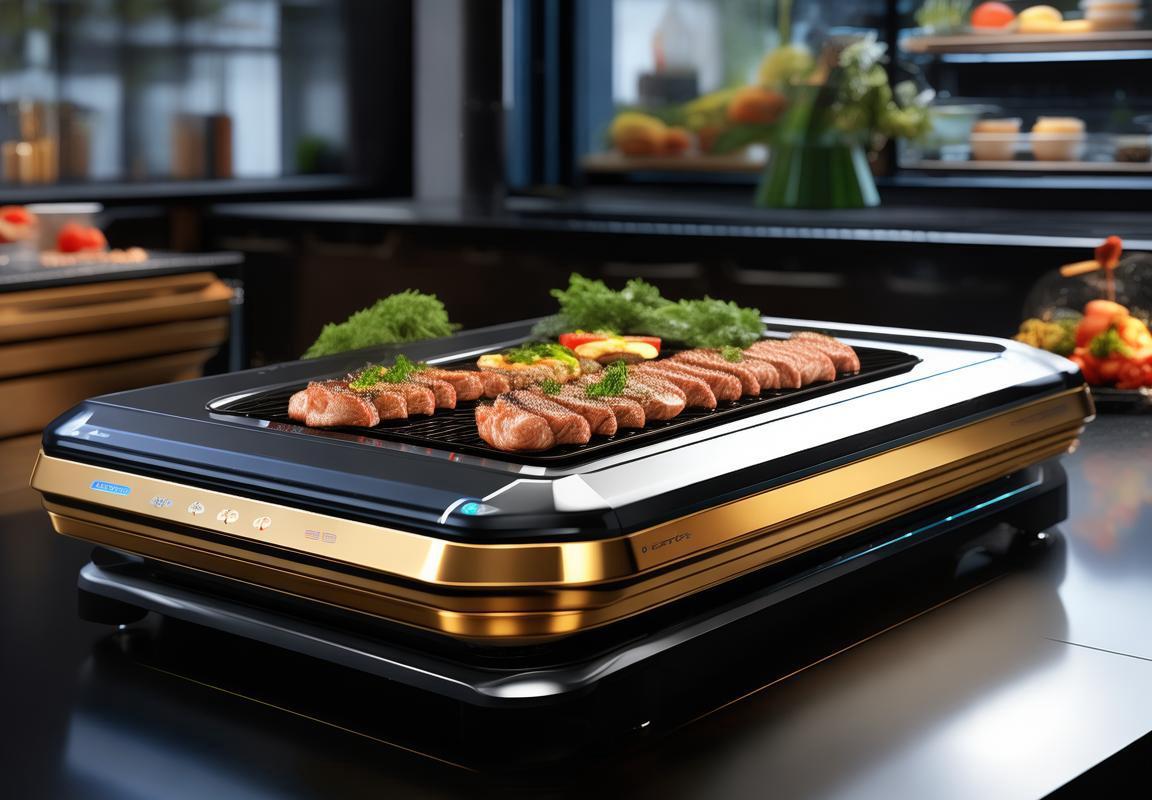
Distribution Channels and Sales Strategies
In the competitive landscape of the contact grill market, the pathways through which products reach consumers and the tactics employed to sell them are as diverse as they are strategic. Distribution channels vary widely, and sales strategies must adapt to changing consumer behaviors and market trends.
Diverse Distribution Networks
Retailers and online platforms have long been the backbone of the contact grill distribution network. Supermarkets and specialty stores play a crucial role, offering customers a physical space to explore and purchase the latest grill models. These outlets often carry a range of brands and price points, catering to different consumer segments.
However, the rise of e-commerce has expanded the reach of contact grill manufacturers. Online marketplaces have become significant channels for direct sales, allowing consumers to browse a vast selection of products from the comfort of their homes. The ease of online shopping has also made it easier for smaller or newer brands to gain visibility and market share.
Specialty Retailers and Direct-to-Consumer Models
Specialty retailers dedicated to kitchen appliances and outdoor cooking gear have seen a surge in popularity. These stores offer a personalized shopping experience, with knowledgeable staff who can provide advice and demonstrations of contact grills. This personalized service can be a significant selling point for customers looking for the best quality and features.
In recent years, some manufacturers have adopted a direct-to-consumer (DTC) model, bypassing traditional retail channels. This approach often allows for greater control over pricing, branding, and customer service. DTC sales can be facilitated through a company’s website, social media platforms, and targeted online advertising campaigns.
Wholesale and Distribution Partnerships
For manufacturers aiming to reach a wider market, establishing partnerships with wholesale distributors is essential. These partners can supply contact grills to a vast network of retailers, including large department stores and online marketplaces. Distributors often have a deep understanding of market trends and consumer preferences, which can inform the sales strategy.
Cross-Border E-commerce
With the global market becoming increasingly interconnected, cross-border e-commerce has opened up new opportunities for contact grill manufacturers. By leveraging international platforms, brands can expand their reach beyond their domestic markets. This strategy requires careful attention to cultural nuances, language barriers, and shipping logistics.
Sales Strategies and Marketing Tactics
To stand out in a crowded market, contact grill manufacturers must employ effective sales strategies and marketing tactics. Here are some key approaches:
Branding and PositioningCreating a strong brand identity is crucial. Brands must convey their unique selling points, whether it’s innovative technology, eco-friendliness, or a commitment to culinary excellence. Positioning within the market—whether as a premium, budget, or lifestyle brand—affects consumer perception and purchase decisions.
Customer Engagement and ExperienceEngaging with customers through social media, influencer partnerships, and live demonstrations can build brand loyalty and drive sales. Providing exceptional customer service, from pre-purchase inquiries to post-purchase support, is also vital for fostering trust and repeat business.
Promotions and IncentivesSpecial offers, discounts, and loyalty programs can entice consumers to purchase contact grills. Limited-time promotions, bundle deals, and referral incentives are all strategies that can boost sales during peak shopping periods.
Digital Marketing and SEOA robust online presence is essential for attracting new customers. Search engine optimization (SEO), pay-per-click (PPC) advertising, and content marketing are effective tools for driving traffic to a company’s website and converting visitors into buyers.
Product Differentiation and FeaturesHighlighting unique features and innovations in contact grills can differentiate a product from competitors. Whether it’s an advanced temperature control system, a sleek design, or smart technology integration, emphasizing what sets a product apart can be a compelling sales strategy.
By navigating the complex landscape of distribution channels and implementing well-crafted sales strategies, contact grill manufacturers can not only meet consumer demands but also drive growth and establish a lasting presence in the market.

Challenges and Opportunities
In the competitive landscape of the contact grill market, several challenges and opportunities stand out as pivotal factors influencing the trajectory of growth and innovation. Navigating these dynamics is crucial for both established players and new entrants.
Consumer safety and health concerns are at the forefront of challenges. With rising awareness of food safety and the potential health risks associated with cooking methods, manufacturers must ensure that their contact grills meet stringent safety standards. This includes the use of non-toxic materials and the reduction of harmful emissions, which can be a significant hurdle for those not invested in research and development.
The shift towards sustainability and eco-friendly products presents both a challenge and an opportunity. As consumers become more environmentally conscious, there’s a growing demand for grills made from recycled materials and those that consume less energy. This push for sustainability requires manufacturers to adapt their production processes and supply chains, which can be costly but also opens up new markets for eco-conscious consumers.
Globalization has expanded the market but also introduced complexities. Distributing products across international borders means complying with various regulations and standards. While this can be challenging, it also offers the chance to tap into new markets and customer segments that may have different preferences and needs.
Evolving consumer tastes and trends are a continuous challenge. What’s popular today may not be tomorrow, and keeping up with these changes requires agility and a keen understanding of market dynamics. For example, the surge in demand for electric and induction cooktops has influenced the design and functionality of contact grills, leading to a focus on features like precision temperature control and adjustable cooking surfaces.
Intellectual property (IP) protection is another critical challenge. In a market where innovation is key, manufacturers must safeguard their designs and technologies to prevent imitation and ensure a competitive edge. This involves not only patent filings but also effective branding and marketing strategies.
On the flip side, there are several opportunities that arise from these challenges. The rise of online retail platforms has opened up new channels for reaching customers. While this requires a strong online presence and digital marketing skills, it also allows for direct interaction with consumers, leading to valuable feedback and insights.
The growing interest in health and wellness has created a ripe market for contact grills that promote healthier cooking methods, such as grilling over direct heat which can reduce the need for oil compared to frying. This niche offers a unique selling proposition for manufacturers looking to differentiate their products.
Technological advancements have paved the way for new opportunities. Smart grills equipped with connectivity features, such as Bluetooth or Wi-Fi, allow for remote monitoring and control, which can enhance user experience and provide valuable data for manufacturers to refine their products.
The rise of social media and influencer marketing has also become a significant opportunity. By leveraging these platforms, manufacturers can create buzz around their products and reach a wider audience. Influencers can showcase the benefits of contact grills in a relatable way, which can be more persuasive than traditional advertising.
Innovation in materials and design is another area ripe for opportunity. As consumers seek more durable and aesthetically pleasing appliances, manufacturers can explore new materials and design concepts that not only improve the longevity of the product but also appeal to a broader demographic.
The integration of contact grills into smart home ecosystems is also a promising opportunity. As homes become increasingly connected, appliances that can be controlled and monitored through a single interface offer convenience and efficiency. This integration can open up new markets and opportunities for collaboration with other smart home device manufacturers.
Lastly, the opportunity to expand into new geographical markets is significant. With the right strategy and understanding of local regulations and consumer preferences, manufacturers can successfully enter new territories and grow their market share.
Navigating the challenges and capitalizing on the opportunities in the contact grill market requires a strategic approach that combines innovation, market research, and a commitment to quality. By doing so, manufacturers can stay ahead in a dynamic and ever-evolving industry.

Case Studies: Success Stories of OEM Contact Grill Manufacturers
In the realm of OEM contact grill manufacturing, several companies have crafted success stories through innovative designs, strategic partnerships, and a deep understanding of market demands. Let’s delve into a few of these remarkable tales.
GrillCraft, a leader in the industry, has seen its success hinge on a relentless pursuit of quality and a commitment to customer satisfaction. By focusing on durable materials and intuitive user interfaces, GrillCraft has managed to carve out a niche in the high-end market, attracting discerning consumers who value both performance and design.
One of GrillCraft’s standout innovations was the introduction of their multi-functional contact grill, which combined the convenience of a traditional grill with the efficiency of an oven. This dual-purpose appliance not only expanded their product line but also catered to consumers seeking versatility in their kitchen appliances.
Another OEM contact grill manufacturer, GrillGuru, has leveraged their strong R&D team to develop a line of eco-friendly grills. These models are not only energy-efficient but also come with features that reduce food waste, such as an auto shut-off function when the grill is left unattended. GrillGuru’s commitment to sustainability has resonated with environmentally conscious consumers, boosting their brand reputation and market share.
The story of GrillEssence, a newer entrant in the market, is one of agility and customer-centricity. Recognizing the importance of online sales and direct-to-consumer relationships, GrillEssence focused on building a strong online presence and engaging with customers through social media. Their approach allowed them to gather valuable feedback and quickly adapt their products to meet evolving consumer preferences.
One such adaptation was the introduction of a line of grills designed for outdoor enthusiasts. By understanding the needs of campers and tailgaters, GrillEssence developed compact, portable contact grills that were perfect for on-the-go cooking. This strategy not only opened new market segments but also helped them establish a loyal customer base.
For GrillPrestige, success has been achieved through strategic partnerships and a focus on premium materials. By collaborating with leading suppliers of stainless steel and high-quality heating elements, GrillPrestige has been able to offer grills that not only perform well but also have a sleek, sophisticated appearance. Their attention to detail has led to a loyal following of consumers who appreciate craftsmanship and luxury in their kitchen appliances.
GrillVita, on the other hand, has distinguished itself by focusing on health-conscious consumers. Their contact grills are designed with non-stick coatings and adjustable temperature controls, allowing users to achieve perfect grill marks without the need for excessive oil. This health-forward approach has positioned GrillVita as a go-to brand for those looking to enjoy grilled meals without compromising on their wellness goals.
In each of these success stories, the common thread is a deep understanding of consumer needs and a willingness to innovate. Whether it’s through enhanced functionality, sustainability, or health benefits, these OEM contact grill manufacturers have managed to stand out in a competitive market. Their stories serve as a testament to the importance of staying ahead of trends, embracing technological advancements, and always keeping the end-user in mind.
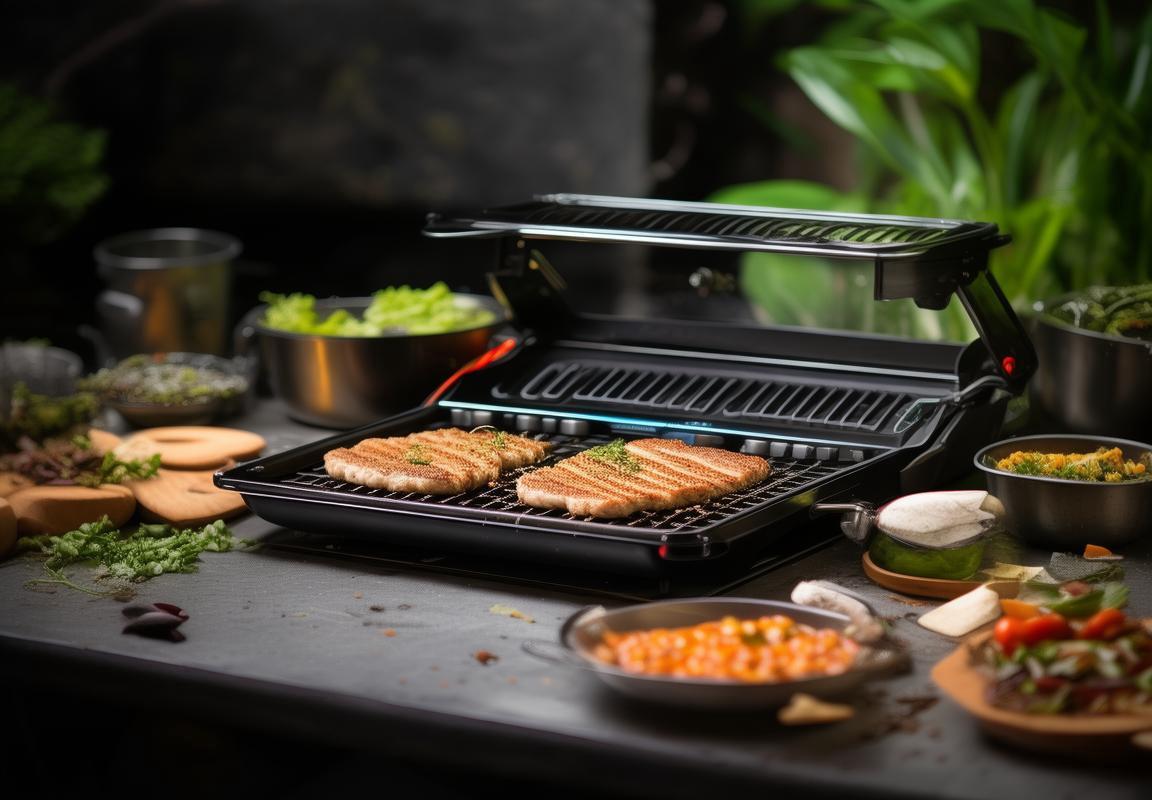
Regulatory Environment and Compliance
In the ever-evolving landscape of the European and North American contact grill market, manufacturers must navigate a complex web of regulations and compliance standards. From safety protocols to environmental concerns, the regulatory environment plays a crucial role in shaping the industry’s trajectory. Here’s a closer look at the regulatory environment and the importance of compliance for contact grill manufacturers.
The European Union (EU) has stringent regulations in place that affect the manufacturing, import, and sale of contact grills. One of the key regulatory frameworks is the General Product Safety Directive (GPSD), which sets out the basic safety requirements for all products placed on the market. This directive ensures that products, including contact grills, do not pose a risk to consumers’ health or safety.
The EU also enforces the Restriction of Hazardous Substances (RoHS) directive, which restricts the use of certain hazardous substances in electrical and electronic equipment. Contact grill manufacturers must adhere to these restrictions to ensure that their products do not contain excessive amounts of lead, mercury, cadmium, hexavalent chromium, polybrominated biphenyls (PBBs), or polybrominated diphenyl ethers (PBDEs).
In the United States, the Consumer Product Safety Commission (CPSC) oversees the safety of consumer products, including contact grills. The CPSC enforces the Consumer Product Safety Act (CPSA), which establishes the minimum safety standards for consumer goods. Manufacturers must comply with these standards to avoid recalls and legal action.
The CPSC also regulates the use of lead and other substances in children’s products, which extends to some contact grills due to their potential use in household settings where children may be present. This means that manufacturers must ensure that their products meet specific lead content limits to be deemed compliant.
Environmental regulations are also a significant factor in the contact grill industry. The European Ecodesign Directive and the Energy-related Products (ErP) directive aim to improve the energy efficiency and environmental performance of products. Contact grill manufacturers must design their products to meet these directives, which can include optimizing heating elements for energy efficiency and minimizing waste during production.
Compliance with these regulations is not only a legal requirement but also a strategic choice for manufacturers. Adhering to strict safety and environmental standards can enhance a company’s reputation and build trust with consumers. It can also open up new markets, as some retailers and buyers require proof of compliance before they will stock or sell a product.
However, the process of ensuring compliance can be challenging. It involves rigorous testing and certification, which can be time-consuming and costly. Manufacturers must invest in quality control systems and often work closely with independent testing laboratories to verify that their products meet all necessary standards.
Moreover, regulations are not static; they evolve over time. Manufacturers must stay informed about changes in the regulatory landscape to avoid non-compliance. This requires ongoing monitoring of legislative updates and the ability to adapt production processes accordingly.
In some cases, manufacturers may opt to partner with regulatory experts or consultancies that specialize in product compliance. These partnerships can provide valuable insights and resources to navigate the complex web of regulations effectively.
Despite the challenges, the regulatory environment offers opportunities for innovation. By designing products that are inherently safer and more environmentally friendly, manufacturers can differentiate themselves in the market. They can also capitalize on the growing consumer demand for sustainable and eco-friendly products.
In conclusion, the regulatory environment and compliance are integral to the contact grill industry. They are not just about meeting legal requirements but about building a sustainable and responsible business. Manufacturers that can navigate these complexities successfully will be well-positioned to thrive in a market that is increasingly conscious of safety, health, and environmental impact.

Future Outlook and Predictions
The contact grill market is poised for significant changes, driven by evolving consumer needs and technological advancements. As we look ahead, several key trends are emerging that promise to shape the future landscape of this industry.
-
Rise of Smart Grills and ConnectivitySmart appliances are becoming increasingly popular, and the contact grill industry is no exception. The integration of IoT (Internet of Things) technology allows for connectivity, enabling users to monitor and control their grills remotely. This shift towards smart grills not only enhances convenience but also opens doors for data analytics that can optimize cooking times and temperatures.
-
Health and Wellness TrendsThere’s a growing demand for healthier cooking methods, and contact grills are stepping into the spotlight. Their ability to cook with less oil compared to traditional grilling methods is appealing to health-conscious consumers. This trend is likely to drive innovation in grill design, focusing on healthier cooking options and features that promote better health outcomes.
-
Customization and PersonalizationConsumers are seeking more personalized experiences, and the contact grill market is responding by offering a variety of grill types and designs to cater to different preferences. From compact grills suitable for small kitchens to large commercial grills for restaurants, the market is expanding to meet the diverse needs of consumers and businesses alike.
-
Sustainability and Eco-Friendly DesignsEnvironmental concerns are prompting manufacturers to focus on sustainability. This includes the use of recyclable materials, energy-efficient designs, and the reduction of carbon footprints throughout the product lifecycle. As eco-friendly practices become more mainstream, we can expect to see a surge in green certifications and eco-conscious marketing campaigns.
-
Globalization of Market TrendsInnovations and trends in one region often quickly spread to others. As contact grill manufacturers continue to develop new products, these advancements will likely be adopted globally. The international market is becoming more interconnected, with trends in Europe and North America influencing those in Asia, South America, and beyond.
-
Competitive Landscape and Market SaturationThe contact grill market is becoming more competitive, with new entrants and established brands vying for market share. This competition can lead to increased innovation but also market saturation. To stand out, manufacturers will need to differentiate their products through unique features, superior quality, and effective marketing strategies.
-
Economic and Demographic ShiftsEconomic fluctuations and demographic changes can significantly impact the contact grill market. For example, a downturn in the economy might lead to a decline in consumer spending on non-essential items like kitchen appliances. Conversely, population growth in urban areas could create a demand for compact, efficient cooking solutions, such as contact grills.
-
Technological Integration and CollaborationsThe future of the contact grill market will see more collaboration between appliance manufacturers and technology companies. Partnerships could lead to groundbreaking innovations, such as grills that integrate with other smart home devices or that incorporate AI to provide personalized cooking guidance.
-
Focus on Safety and DurabilityAs the market grows, consumer safety and product longevity will remain top priorities. Expect to see an emphasis on robust materials, rigorous quality control, and safety certifications. Ensuring that contact grills are reliable and safe to use will be crucial for maintaining consumer trust and loyalty.
-
Regulatory Compliance and StandardsCompliance with global safety and environmental regulations will continue to be a challenge for contact grill manufacturers. Adhering to various standards across different markets will be necessary to ensure that products meet local requirements and gain market access.
In summary, the future of the contact grill market is one of continuous innovation, market expansion, and adaptation to changing consumer needs. As technology advances and consumer preferences evolve, the industry will be well-positioned to embrace new opportunities and overcome challenges, ultimately shaping a dynamic and thriving market landscape.
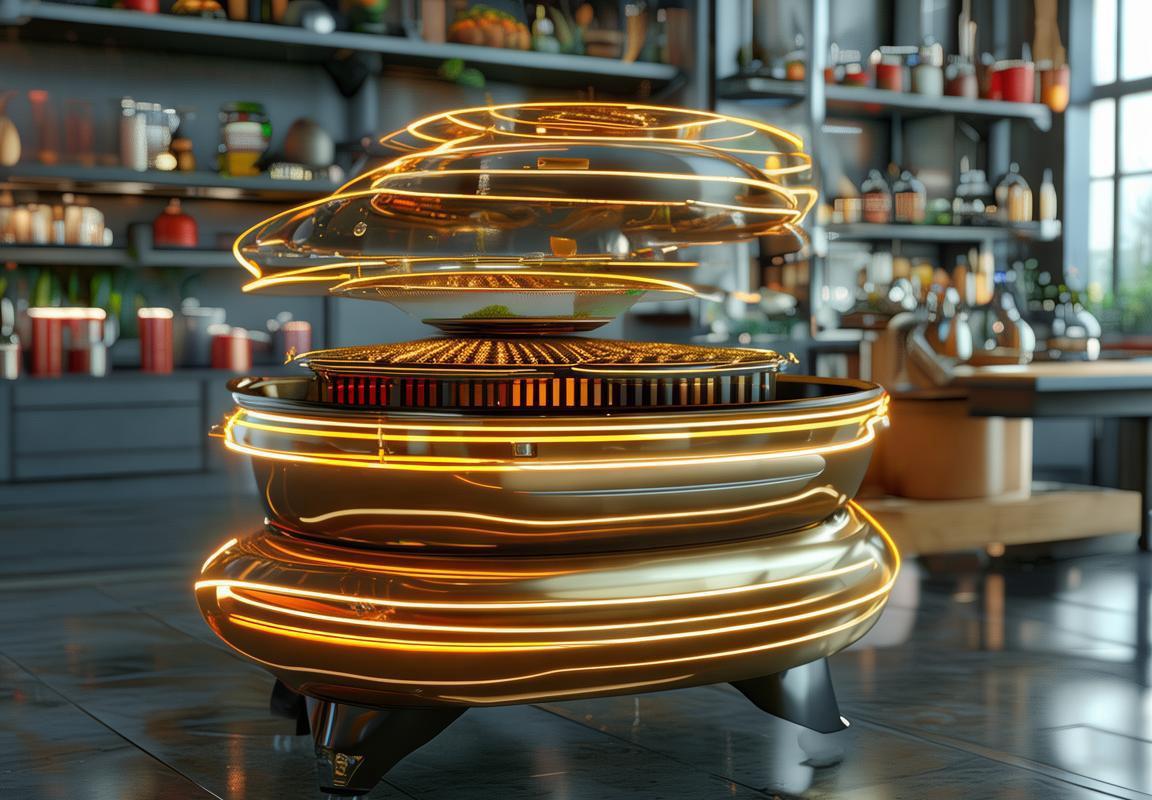
Conclusion
In reflecting on the journey of the contact grill market, it’s clear that innovation and adaptation have been key drivers of success. From the rise of smart appliances to the emphasis on health and convenience, the industry has evolved significantly. Despite the challenges posed by market saturation and regulatory hurdles, opportunities for growth remain abundant. OEM manufacturers have played a pivotal role in shaping this dynamic landscape, offering tailored solutions that cater to diverse consumer needs. As we look ahead, the future of contact grills in Europe and North America seems bright, with a blend of technological advancements, strategic sales tactics, and a keen understanding of consumer preferences paving the way for continued prosperity. The path forward is not without its complexities, but the commitment to quality, innovation, and customer satisfaction will undoubtedly lead the industry towards new heights.